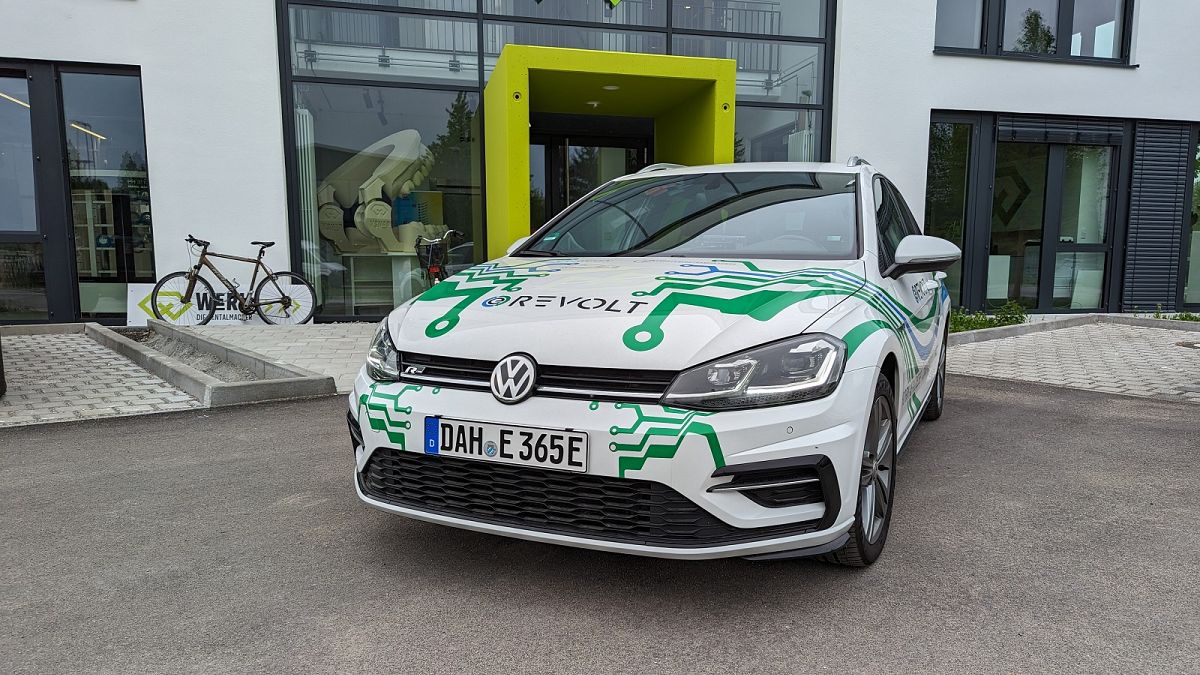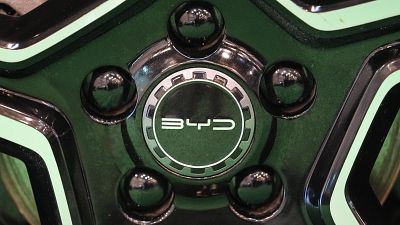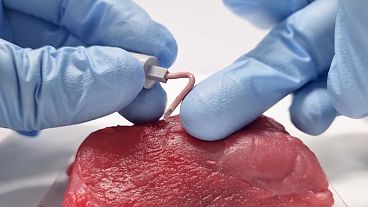Using a method that can fit batteries in up to 42 mainstream car models, start-up e-Revolt believes it can cut conversion times from months to a day.
The cost of a brand-new electric car is frequently cited as one of the primary turn-offs for car owners looking to make greener, more sustainable choices.
But what if you could, instead of biting the bullet and forking out for a new electric vehicle (EV) you can ill afford, keep your current car and still go green?
Converting fossil fuel-guzzling vehicles into battery-powered ones is not a new concept, with the principle even being applied to vintage cars to make them fit for purpose in the modern, eco-conscious era.
The process, however, can be arduous, with existing companies quoting anywhere from two weeks to six months to carry out the required work on an internal combustion engine (ICE) car.
With a novel workflow and battery design, a start-up based in Germany now believes it can cut customer waiting times down to as little as eight hours.
Not only that, it can convert up to 42 different models from major car manufacturers - including the Volkswagen Golf and Polo, Audi A3, and Seat Leon - with a one-size-fits-all kit.
It might sound too good to be true for many people but the way e-Revolt has approached the conversion process has, from the start, arguably set it on a different trajectory from other companies in the field who are looking to scale up.
"It's a production. That means you have to think about how you can do it quicker and easier and so on. But this works only if you have a lot of volume, because you have to put in a lot of work and money upfront to develop all this," Rolf Behling, a managing director and technical lead at e-Revolt, told Euronews Next.
"Later on, you can save time and money. But that's the difference: you have to have a serious solution".
Need for speed
So, how does it work and why is the turnaround time so short compared to existing solutions?
"We take out the combustion engine and we have a frame which uses the old points of the engine," Timo Walden, project manager at e-Revolt and one of the company’s first investors, explained.
"And so we can easily swap only the engine with the new frame and the components. And that's why we are much faster than an individual solution. So, the frame here is a big part of our fastness".
The company says it usually takes on average around a day to complete the process, which includes stripping the old engine block out of the car and replacing it with its patented battery technology and engine frame, as well as the full digitalisation of the vehicle.
Costing between €12,000 and €15,000 to complete the job, the price point may give some reassurance to many consumers who currently can’t stretch their budgets to buy a new EV.
While speed is key to making the conversion process scaleable, being able to adapt production is the ace up e-Revolt’s sleeve.
While the current set-up is geared to accommodate a bank of models by specific car brands, the team says it can meet the challenge of a customer wanting to retrofit an entirely different vehicle by going back to the drawing board.
"There's not a single solution which means this works for specific vehicles or a group of vehicles. And if you have a new vehicle, then you have to think about again 'what do we have to change?'" said Behling, a former software engineer.
But why bother even converting an old car in the first place and are people receptive to the idea of prolonging their current car’s lifespan?
"I would say 95 per cent of people are very positive about it. They talk to us and say: 'OK, that's great. It's a good idea. You don't need to have new resources. You can reuse that'. Some people are saying, 'yes, very nice. It's maybe quite good to have it as a second car,' or something like that," Behling said.
The paying public may see the common sense in reusing and updating a car, but the other potential sticking point is the automotive companies themselves, many of whom are pushing to design and produce a wider range of EV models for the market.
Supporting the circular economy
How do they react to hearing the original, in-house designed engines and components are being ripped out and jettisoned from their cars in favour of parts from another company?
"They get that the idea is quite good. It depends on which people you are talking to. If you're talking to sales guys, they don't like it because they want to sell a new car," said Behling.
"But if you talk to, let's say, the carmakers, then they like the idea because they say, of course, the circular economy is for them a very important issue".
As the world grapples with the impact of the climate crisis, being seen as part of the solution to polluting combustion cars is also a powerful motivator for carmakers to get on board.
"I think there is a way we can maybe work together in the future because the companies know that the real solution is not to throw the car every time away," Walden told Euronews Next.
"So, the car has to be sustainable; not only to target sustainability but to be really sustainable, that you use the car in a circular economy and upgrade it maybe in the future with a new battery or so on".
Extending the life cycle of vehicles in a sustainable way and with a mind to the circular economy gives an SME like e-Revolt the maneuverability to adapt that most big car manufacturers don’t have.
The current battery life gives cars converted by e-Revolt an estimated range of 250 to 300 km on a single charge, but development is ongoing to improve this performance.
"That's a positive point [about e-Revolt] because our cars or our solutions are modular. So if, for example, one day there's a better battery, we don't need the time a normal OEM [original equipment manufacturer] needs - two or three years or longer - to get this new battery in the car. We can say, 'okay, if you want to change that, we can change it to the new battery'. So everything, every component can be switched to a different component," Walden added.



